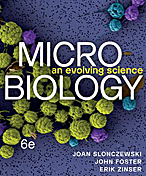Zymomonas mobilis
A Microbial Biorealm page on the genus Zymomonas mobilis
Classification
Higher order taxa
Bacteria; Proteobacteria; Alpha Proteobacteria; Sphingomonadales; Sphingomonadaceae[Others may be used.
Species
Zymomonas mobilis
|
NCBI: Taxonomy |
Description and significance
Zymomonas mobilis is a rod shaped gram negative bacterium that can be found in sugar rich plant saps. It is usually 2-6μm long and 1-1.4 μm wide, but this can vary significantly. In high CO2 or ethanol concentrations slime and granular layers have been see around the cell. It has been isolated from sugar cane as well as alcoholic beverages such as African palm wine; it is also known to cause cider sickness and spoiling of beer. However, the spoiling of beer is very limited due to its optimal temperature range of 25-30°C. It is being studied for its ability to ferment sugar to ethanol. Its ability to efficiently ferment carbohydrates using the Enter-Doudoroff pathway makes it an attractive candidate for producing bioethanol for fuel. It has also shown a high growth rate, tolerance to ethanol as well as being amendable to engineering [1] [2].
Genome structure
There is currently one compete genome sequence and one in progress for the NCBI genome list for zymomonas mobilis. The genome has a circular chromosomes with 1,998 open reading frames, three ribosomal RNA transcription units and is made up of 2,056,416 base pairs. It has an overall G+C content of 46.3%. It appears to only be able to metabolize glucose through the Entner-Doudoroff pathway because the genome does not have recognized genes for 6-phosphofructokinase, an enzyme essential for the Embden-Meyerhof-Parnas pathway as well as lacking the genes for the enzymes 2-oxoglutarate dehydrogenase complex and malate dehydrogenase both of which are involved in the tricarboxylic acid cycle [4].
Cell structure and metabolism
Describe any interesting features and/or cell structures; how it gains energy; what important molecules it produces.
Ecology
Describe any interactions with other organisms (included eukaryotes), contributions to the environment, effect on environment, etc.
Pathology
How does this organism cause disease? Human, animal, plant hosts? Virulence factors, as well as patient symptoms.
Application to Biotechnology
Does this organism produce any useful compounds or enzymes? What are they and how are they used?
Current Research
Enter summaries of the most recent research here--at least three required
References
Edited by David Ly student of Rachel Larsen and Kit Pogliano
